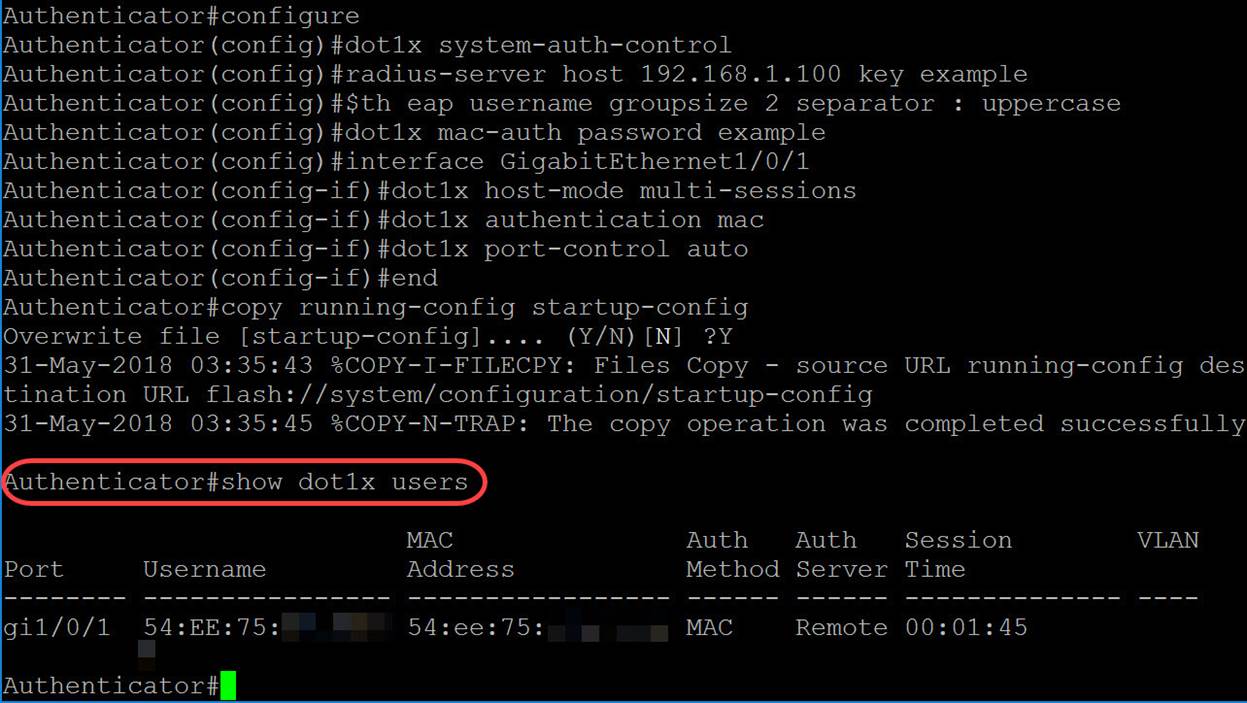Alright, folks, let’s dive straight into the nitty-gritty of something that’s been on everyone's mind lately. If you're reading this, chances are you're scratching your head wondering how to use RemoteIoT behind a router without MAC filtering getting in your way. Don’t worry, you’re not alone. Many tech enthusiasts, hobbyists, and even professionals face this challenge daily. But here’s the good news—there’s a way to make it work, and we’re going to break it down step by step.
Now, before we jump into the technical stuff, let’s set the stage. Using RemoteIoT behind a router without MAC filtering is like trying to sneak into a VIP party without an invite. It’s tricky, but with the right tools and knowledge, you can pull it off. This guide will walk you through everything you need to know, from understanding the basics of RemoteIoT to mastering the art of bypassing MAC filtering. So, buckle up and let’s get started!
One more thing before we move forward. This isn’t just any old guide. We’re going to make sure you leave here with actionable steps, tips, and tricks that you can apply right away. Whether you’re a beginner or an advanced user, this article has got you covered. So, without further ado, let’s get to it!
- Why Ullu Web Series Online Is Revolutionizing Indian Digital Entertainment
- Vegamovie The Ultimate Streaming Platform For Movie Lovers
Understanding RemoteIoT: The Basics
First things first, what exactly is RemoteIoT? Well, think of it as a magical tool that lets you control your IoT devices from anywhere in the world. Imagine being able to turn off your smart lights, adjust your thermostat, or even lock your front door while you’re miles away. Sounds cool, right? But like any powerful tool, it comes with its own set of challenges, especially when you’re trying to use it behind a router.
Now, here’s where things get interesting. When you’re behind a router, your device’s MAC address becomes a crucial factor. MAC filtering is a security feature that allows or denies network access based on the MAC addresses of devices. So, if your router is set up to only allow specific MAC addresses, you’ll hit a roadblock when trying to use RemoteIoT. But don’t panic—we’ve got solutions for that!
Why Use RemoteIoT Behind a Router?
Let’s talk about why you’d even want to use RemoteIoT behind a router. For starters, it’s all about security and convenience. By keeping your IoT devices behind a router, you’re adding an extra layer of protection against potential hackers. Plus, it allows you to manage your devices more efficiently, especially if you have multiple IoT gadgets in your home or office.
- Why Vega Movi Is The Ultimate Gamechanger In The Film Industry
- Vegamovues The Ultimate Guide To This Rising Star In The Streaming World
Another reason is flexibility. Let’s say you’ve got a smart home setup with multiple devices. Being able to control them remotely while keeping them secure behind a router is a game-changer. It gives you the freedom to manage your devices without compromising on security. And let’s face it, who doesn’t want that?
How to Bypass MAC Filtering
Alright, here’s where the real fun begins. Bypassing MAC filtering might sound intimidating, but it’s actually pretty straightforward once you know what you’re doing. The key is to understand how MAC filtering works and then use that knowledge to your advantage.
Step 1: Identify Your Router’s MAC Filtering Settings
The first step is to figure out if your router has MAC filtering enabled. Most modern routers have this feature, so chances are it’s already turned on. To check, log into your router’s admin panel and look for the MAC filtering settings. It’s usually under the security or wireless settings section.
If MAC filtering is enabled, take note of the list of allowed MAC addresses. This will come in handy later when we talk about spoofing. And don’t worry if you’re not familiar with this process—we’ll walk you through it step by step.
Step 2: Spoof Your Device’s MAC Address
Now, here’s the secret sauce. Spoofing your device’s MAC address is one of the easiest ways to bypass MAC filtering. Essentially, you’re tricking your router into thinking your device has a different MAC address. It’s like wearing a disguise to a party—you’re still you, but you look different on the outside.
To spoof your MAC address, you’ll need to use a tool like MAC Address Changer or even your device’s built-in settings. The process varies depending on your operating system, but the basic idea is the same. You’ll need to generate a new MAC address and assign it to your device. Once that’s done, your router will think you’re a different device altogether.
Setting Up RemoteIoT Behind a Router
Now that we’ve got the MAC filtering issue out of the way, let’s talk about setting up RemoteIoT behind a router. This is where the magic happens, and trust me, it’s worth the effort.
Step 1: Configure Your Router
The first step is to configure your router to work with RemoteIoT. This involves setting up port forwarding, which allows your IoT devices to communicate with the outside world. To do this, log into your router’s admin panel and look for the port forwarding settings. You’ll need to specify the ports that RemoteIoT uses and direct them to your device’s IP address.
Once you’ve set up port forwarding, test it out to make sure everything’s working as expected. You can use tools like Canyouseeme.org to verify that your ports are open and accessible from the outside. If everything checks out, you’re good to go!
Step 2: Secure Your Connection
Security should always be a top priority when setting up RemoteIoT behind a router. One of the best ways to secure your connection is by using a Virtual Private Network (VPN). A VPN encrypts your data and keeps it safe from prying eyes, making it much harder for hackers to intercept your traffic.
Another option is to use a firewall. Most routers come with built-in firewalls that can help protect your network from unauthorized access. Make sure yours is enabled and properly configured to block any suspicious activity.
Troubleshooting Common Issues
Let’s face it—things don’t always go as planned. If you’re having trouble getting RemoteIoT to work behind your router, don’t despair. Here are a few common issues and how to fix them:
- Issue 1: MAC Filtering Blocking Access – Double-check your router’s MAC filtering settings and make sure your device’s MAC address is on the allowed list. If you’re spoofing your MAC address, ensure it’s correctly configured.
- Issue 2: Port Forwarding Not Working – Verify that your router’s port forwarding settings are correct and test them using a tool like Canyouseeme.org. If the issue persists, try resetting your router and starting from scratch.
- Issue 3: Security Concerns – If you’re worried about security, consider using a VPN or enabling your router’s firewall. These measures can help protect your network from potential threats.
Best Practices for Using RemoteIoT
Now that you’ve got everything set up, let’s talk about some best practices for using RemoteIoT behind a router:
1. Keep Your Firmware Updated
Always make sure your router’s firmware is up to date. Manufacturers frequently release updates that improve performance and fix security vulnerabilities. By keeping your firmware updated, you’re ensuring that your network is as secure and efficient as possible.
2. Use Strong Passwords
Strong passwords are your first line of defense against unauthorized access. Use a combination of letters, numbers, and symbols to create passwords that are difficult to guess. And don’t forget to change them regularly to stay ahead of potential threats.
3. Monitor Your Network Activity
Regularly monitoring your network activity can help you catch any suspicious behavior before it becomes a problem. Most routers come with tools that allow you to view connected devices and monitor traffic. Use these tools to keep an eye on your network and ensure everything’s running smoothly.
Advanced Tips for Power Users
If you’re a power user looking to take your RemoteIoT setup to the next level, here are a few advanced tips:
1. Set Up Dynamic DNS
Dynamic DNS (DDNS) allows you to access your network using a domain name instead of an IP address. This is especially useful if your ISP assigns you a dynamic IP address that changes frequently. By setting up DDNS, you can ensure that you always have access to your network, no matter what your IP address is.
2. Use a Dedicated IoT Network
For added security, consider setting up a dedicated IoT network. This allows you to keep your IoT devices separate from your main network, reducing the risk of a security breach. Most modern routers support multiple networks, so setting this up is usually just a matter of configuring your router’s settings.
Conclusion
And there you have it, folks—a comprehensive guide on how to use RemoteIoT behind a router without MAC filtering getting in your way. By following the steps outlined in this article, you should now have a solid understanding of how to set up and secure your RemoteIoT devices. Remember, the key to success is preparation and attention to detail. So, take your time, do your research, and don’t be afraid to experiment.
Before we wrap up, let’s quickly recap the key points:
- Understand how MAC filtering works and how to bypass it.
- Set up port forwarding and secure your connection with a VPN or firewall.
- Follow best practices for using RemoteIoT, including keeping your firmware updated and using strong passwords.
- Consider advanced tips like setting up DDNS and using a dedicated IoT network for added security.
Now, it’s your turn to take action. Whether you’re a beginner or an advanced user, there’s always something new to learn and explore. So, don’t hesitate to leave a comment, share this article, or check out some of our other guides. We’re here to help you every step of the way!
And remember, the world of IoT is constantly evolving. Stay curious, stay informed, and most importantly, have fun!
Table of Contents
- Understanding RemoteIoT: The Basics
- Why Use RemoteIoT Behind a Router?
- How to Bypass MAC Filtering
- Step 1: Identify Your Router’s MAC Filtering Settings
- Step 2: Spoof Your Device’s MAC Address
- Setting Up RemoteIoT Behind a Router
- Step 1: Configure Your Router
- Step 2: Secure Your Connection
- Troubleshooting Common Issues
- Best Practices for Using RemoteIoT
- Advanced Tips for Power Users
- Adult Vegamovies Your Ultimate Guide To Familyfriendly Entertainment In Las Vegas
- Hdhub4u In Hollywood The Ultimate Guide To Streaming Movies Like A Pro

